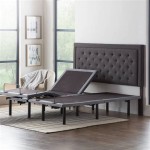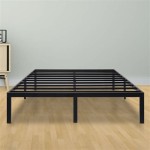Do Bed Bugs Eat Plastic?
### Essential Aspects of Bed Bug Behavior and Plastic Properties Understanding the essential aspects of bed bug behavior and plastic properties is crucial in determining whether bed bugs feed on plastic. These aspects include the bed bugs' feeding habits, the composition of plastic materials, and the potential benefits and limitations of plastic as a food source for bed bugs. This article will delve into these essential aspects, providing a comprehensive analysis of the topic. ### Bed Bugs and Their Feeding Habits Bed bugs are obligate ectoparasites, meaning they rely exclusively on blood meals from warm-blooded hosts for their nutrition. Their mouthparts are adapted for piercing the skin and extracting blood, and they do not possess the digestive enzymes necessary to break down other types of food, such as plant matter or plastic. ### Plastic Composition and Properties Plastic is a diverse group of synthetic materials that includes various types such as polyethylene, polypropylene, and polyethylene terephthalate (PET). These materials are composed of long chains of carbon atoms, often combined with other elements like hydrogen, oxygen, and nitrogen. Plastic is generally non-biodegradable, durable, and resistant to water and most chemicals. ### Plastic as a Food Source for Bed Bugs Given the obligate hematophagous nature of bed bugs and the inert composition of plastic, it is highly unlikely that bed bugs can feed on plastic. Plastic does not provide the necessary nutritional components required for bed bug survival and reproduction. Moreover, the physical properties of plastic, such as its rigidity and lack of moisture, make it an unsuitable food source. ### Potential Benefits of Plastic for Bed Bugs Despite not being a food source, plastic materials may offer certain advantages for bed bugs. The crevices and folds of plastic items can provide hiding places for the insects. Additionally, plastic surfaces can facilitate movement for bed bugs due to their smooth texture. ### Limitations of Plastic for Bed Bugs The benefits of plastic to bed bugs are limited compared to the drawbacks. The lack of nutritional value and the inability of bed bugs to digest plastic outweigh the potential advantages of plastic as a hiding place or travel medium. ### Conclusion In conclusion, the essential aspects of bed bug behavior and plastic properties strongly suggest that bed bugs do not eat plastic. Their obligate blood-feeding habit and the inert composition of plastic make it highly unlikely that plastic can serve as a food source for these insects. While plastic may provide limited benefits as hiding places or travel surfaces, these advantages are outweighed by the lack of nutritional value and the inability of bed bugs to digest the material.
Do Bed Bugs Lay Eggs On Plastic Bedbugs

Can Bed Bugs Go Through A Plastic Mattress Cover

Can Bed Bugs Eat Through Plastic Ess Universal

Do Bed Bugs Lay Eggs On Plastic Bedbugs

Bedbugs

How To Know If You Have Bed Bugs Bon Accord

Can Bed Bugs Walk On Plastic Metal Tiles And Hardwood Floors

How To Get Rid Of Bed Bugs While Traveling Destinationless Travel

Can Bed Bugs Bite Through Clothing Or They T

Early Signs Of Bed Bug Infestations In Your Home







